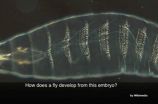(Press-News.org) Investigators at Cincinnati Children's Hospital Medical Center have published the first study to extensively characterize eosinophilic gastritis (EG). The study, published in The Journal of Allergy and Clinical Immunology, found that EG is a systemic disorder that has high levels of eosinophils in the blood and gastrointestinal tract, involves a series of allergy-associated-immune mechanisms and has a gene expression pattern (transcriptome) that is distinct from that of a related disorder, eosinophilic esophagitis (EoE).
Eosinophilic gastrointestinal disorders are chronic inflammatory conditions. They are thought to be triggered by allergic hypersensitivity to certain foods and an over-accumulation in the gastrointestinal tract of white blood cells called eosinophils.
Eosinophilic gastrointestinal disorders can cause a variety of complaints including reflux-like symptoms, vomiting, difficulty swallowing, diarrhea, abdominal pain, failure to grow in childhood and other medical complications. These severe, often painful conditions render children and adults unable to eat many or all foods. Individuals with these diseases often have to fuel their bodies with costly formulas.
"Every day is a challenge," explains Jori Kodroff, a young woman with an eosinophilic gastrointestinal disorder. "Whether it is the daily physical pain of nausea, stomachaches and headaches or the emotional pain of watching everyone around me either eating or talking about food, this disease takes a toll on my life. You never get used to it. I just try to make the best of each day by thinking of all the positive things that I have in my life. I believe that one day there will be a better treatment and a cure thanks to Dr. Rothenberg and other researchers working on this disease, and I am encouraged by the findings in this new study."
Although most prior research on these conditions has focused on eosinophilic esophagitis (EoE), partly because it has well-defined consensus diagnostic criteria, this recent investigation by researchers at Cincinnati Children's advances the understanding of eosinophilic gastritis (EG) through much-needed characterization of the fundamental molecular, histopathologic and clinical features of EG.
"This study is a major leap forward in understanding eosinophilic gastritis," says Marc Rothenberg, MD, PhD, director of the Cincinnati Center for Eosinophilic Disorders at Cincinnati Children's and senior author of the study. "Learning more about each of the distinct eosinophilic gastrointestinal disorders and their similarities and differences brings us that much closer to understanding how to treat and cure each of them."
The study found that EG is a systemic disorder involving profound blood and gastrointestinal tract eosinophilia, meaning that the eosinophil level is higher than normal. As the diagnosis of EG is currently based on histology only, the investigators' molecular findings of a conserved EG transcriptome that is markedly distinct from the EoE transcriptome are notable. Given recent advances in molecular diagnostics for EoE, this finding is especially promising for future diagnostics of eosinophilic gastrointestinal disorders. Additionally, the strong correlation of the disease's tissue pathology with blood eosinophil levels indicates that this blood marker may be useful in monitoring the disease activity (a non-invasive biomarker).
"I hope that the cellular and molecular pathways of EG that we defined in this study will provide a basis for improving diagnosis and treatment," says Julie Caldwell, PhD, first author of the study, "and for further research of eosinophilic gastritis and other understudied eosinophilic disorders."
The clinical features of EG and the involvement of T helper type 2–mediated immune responses defined by this study are also likely to facilitate the understanding of EG pathogenesis, inform clinical practice, and fuel therapeutic strategies such as the usage of biological agents that target the mediators identified.
Ellyn Kodroff, founder of the Campaign Urging Research for Eosinophilic Disease (CURED), which helped fund this study, said, "There is nothing worse for a mother then watching her child suffer. This disease is life altering, physically and emotionally. It of course affects our daughter most but has affected our entire family. When Jori got diagnosed, I made it my goal in life to make sure that she had the best care and felt the best that she could feel and to help as much as I could with raising funds for a cure. We have always felt fortunate to have the best team of doctors taking care of Jori. We are grateful for her care and all the research being done in hope of a cure."
INFORMATION:
Funding support for the study came from the National Institutes of Health (P30 DK078392), Campaign Urging Research for Eosinophilic Disease (CURED), Food Allergy Research & Education (FARE), and Buckeye Foundation.
Related links
Rothenberg lab:
http://www.cincinnatichildrens.org/research/divisions/a/allergy-immunology/labs/rothenberg/default/
Rothenberg lab Facebook page:
http://www.facebook.com/RothenbergEosinophilicLab
Cincinnati Center for Eosinophilic Disorders:
http://www.cchmc.org/cced
Cincinnati Center for Eosinophilic Disorders Facebook page:
http://www.facebook.com/CCEDeos
Campaign Urging Research for Eosinophilic Disease page:
http://curedfoundation.org/site/
About Cincinnati Children's
Cincinnati Children's Hospital Medical Center ranks third in the nation among all Honor Roll hospitals in U.S.News and World Report's 2013 Best Children's Hospitals ranking. It is ranked #1 for cancer and in the top 10 for nine of 10 pediatric specialties. Cincinnati Children's, a non-profit organization, is one of the top three recipients of pediatric research grants from the National Institutes of Health, and a research and teaching affiliate of the University of Cincinnati College of Medicine. The medical center is internationally recognized for improving child health and transforming delivery of care through fully integrated, globally recognized research, education and innovation. Additional information can be found at http://www.cincinnatichildrens.org. Connect on the Cincinnati Children's blog, via Facebook and on Twitter.
Advancing the understanding of an understudied food allergy disorder
2014-09-23
ELSE PRESS RELEASES FROM THIS DATE:
Gene mutation discovered in blood disorder
2014-09-23
An international team of scientists has identified a gene mutation that causes aplastic anemia, a serious blood disorder in which the bone marrow fails to produce normal amounts of blood cells. Studying a family in which three generations had blood disorders, the researchers discovered a defect in a gene that regulates telomeres, chromosomal structures with crucial roles in normal cell function.
"Identifying this causal defect may help suggest future molecular-based treatments that bypass the gene defect and restore blood cell production," said study co-leader Hakon Hakonarson, ...
NASA sees Tropical Depression Fung-Wong becoming more frontal
2014-09-23
Tropical Depression Fung-Wong skirted the coast of mainland China and is moving through the East China Sea. NASA's Aqua satellite captured cloud top temperature data that showed strongest thunderstorms were stretched out as the storm continues to look more frontal in nature.
When NASA's Aqua satellite passed over Fung-Wong on Sept. 22 at 1:23 p.m. EDT, the Atmospheric Infrared Sounder or AIRS instrument read cloud top temperatures. AIRS detected strongest, highest storms, those with the coldest cloud tops stretched out from northwest to southeast giving the depression ...
New research suggests sleep apnea screening before surgery
2014-09-23
Scheduled for surgery? New research suggests that you may want to get screened and treated for obstructive sleep apnea (OSA) before going under the knife. According to a first-of-its-kind study in the October issue of Anesthesiology, the official medical journal of the American Society of Anesthesiologists® (ASA®), patients with OSA who are diagnosed and treated for the condition prior to surgery are less likely to develop serious cardiovascular complications such as cardiac arrest or shock.
"OSA is a common disorder that affects millions and is associated with an increased ...
Recreating the stripe patterns found in animals by engineering synthetic gene networks
2014-09-23
VIDEO:
Researchers at the CRG try to understand how networks of genes work together to create specific patterns like stripes.
They have gone beyond studying individual networks and have created computational and...
Click here for more information.
Pattern formation is essential in the development of animals and plants. The central problem in pattern formation is how can genetic information be translated in a reliable manner to give specific spatial patterns of cellular differentiation. ...
Airway muscle-on-a-chip mimics asthma
2014-09-23
The majority of drugs used to treat asthma today are the same ones that were used 50 years ago. New drugs are urgently needed to treat this chronic respiratory disease, which causes nearly 25 million people in the United States alone to wheeze, cough, and find it difficult at best to take a deep breath.
But finding new treatments is tough: asthma is a patient-specific disease, so what works for one person doesn't necessarily work for another, and the animal models traditionally used to test new drug candidates often fail to mimic human responses – costing tremendous ...
Eating five a day may keep the blues away
2014-09-23
Fruit and vegetable consumption could be as good for your mental as your physical health, new research suggests.
The research, conducted by the University of Warwick's Medical School using data from the Health Survey for England, and published by BMJ Open focused on mental wellbeing and found that high and low mental wellbeing were consistently associated with an individual's fruit and vegetable consumption.
33.5% of respondents with high mental wellbeing ate five or more portions of fruit and vegetables a day, compared with only 6.8% who ate less than one portion. ...
Southampton scientists grow a new challenger to graphene
2014-09-23
A team of researchers from the University of Southampton's Optoelectronics Research Centre (ORC) has developed a new way to fabricate a potential challenger to graphene.
Graphene, a single layer of carbon atoms in a honeycomb lattice, is increasingly being used in new electronic and mechanical applications, such as transistors, switches and light sources, thanks to the unprecedented properties it offers: very low electrical resistance, high thermal conductivity and mechanically stretchable yet harder than diamond.
Now, ORC researchers have developed molybdenum di-sulphide ...
Search for better biofuels microbes leads to the human gut
2014-09-23
CHAMPAIGN, Ill. — Scientists have scoured cow rumens and termite guts for microbes that can efficiently break down plant cell walls for the production of next-generation biofuels, but some of the best microbial candidates actually may reside in the human lower intestine, researchers report.
Their study, reported in the Proceedings of the National Academy of Sciences, is the first to use biochemical approaches to confirm the hypothesis that microbes in the human gut can digest fiber, breaking it down into simple sugars in order to ferment them into nutrients that nourish ...
Results of the 1st EORTC Cancer Survivorship Summit
2014-09-23
A special issue of the European Journal of Cancer presents detailed reports on the wide range of research presented during the 1st EORTC Cancer Survivorship Summit held this past January in Brussels, Belgium.
Early diagnosis, targeted therapeutics, and more personalized multimodal treatments has boosted survival rates of patients with cancer and led to a large and rapidly increasing number of cancer survivors. Despite this good news, cancer survivors are often confronted with a broad spectrum of late adverse treatment effects and some must also deal with societal discrimination ...
Nanotubes help healing hearts keep the beat
2014-09-23
Carbon nanotubes serve as bridges that allow electrical signals to pass unhindered through new pediatric heart-defect patches invented at Rice University and Texas Children's Hospital.
A team led by bioengineer Jeffrey Jacot and chemical engineer and chemist Matteo Pasquali created the patches infused with conductive single-walled carbon nanotubes. The patches are made of a sponge-like bioscaffold that contains microscopic pores and mimics the body's extracellular matrix.
The nanotubes overcome a limitation of current patches in which pore walls hinder the transfer ...





